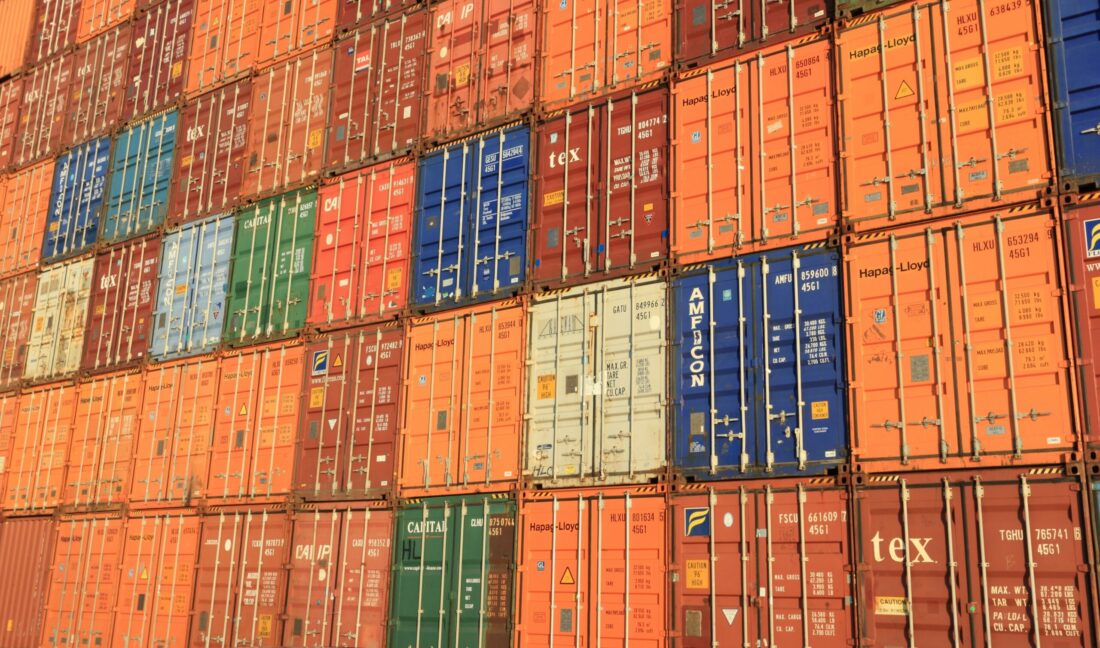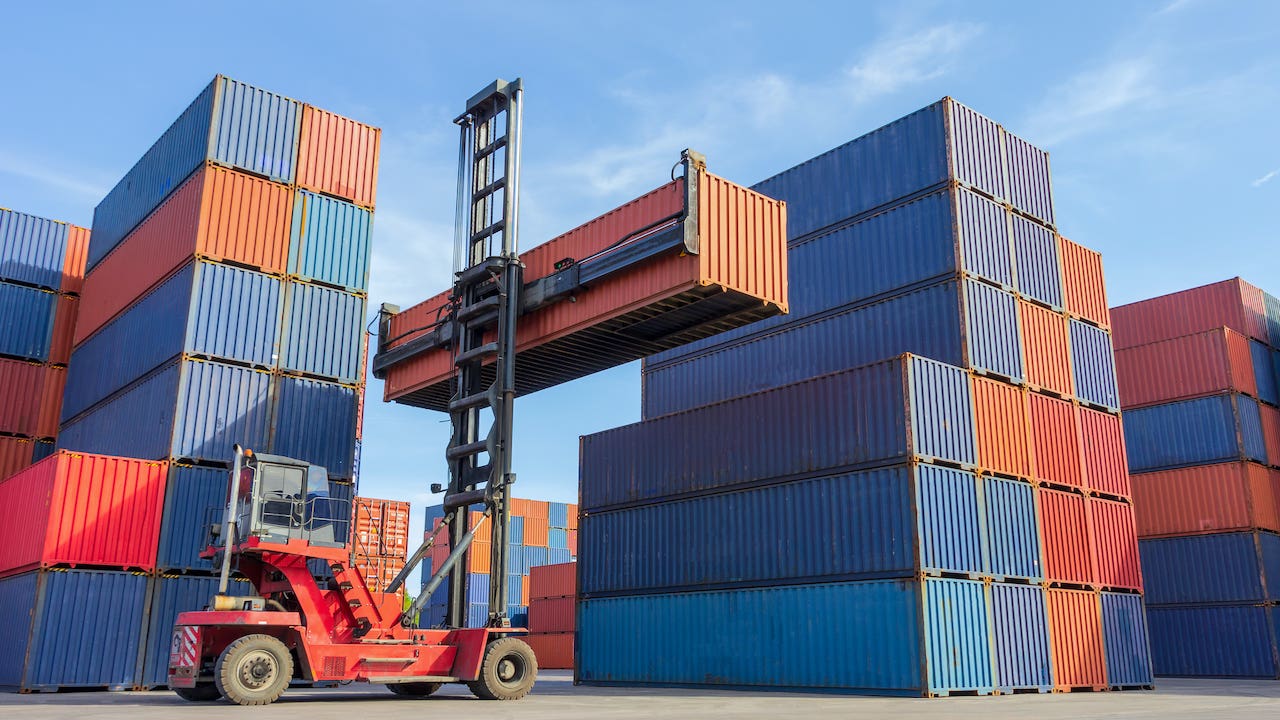The next wave of shipping container storage in business growth
Whatever You Required to Understand About Shipping Containers and Their Practical Applications
Shipping containers have developed from mere devices for transport to versatile structures with countless sensible applications. Their robust style and typical sizing make them perfect for a variety of uses past delivery. From innovative housing options to lasting farming, their flexibility is noteworthy. The opportunities do not end there. Exploring their different features exposes unusual insights into modern-day obstacles and imaginative remedies. What other duties could these containers play in today's globe?
The Style and Framework of Shipping Containers

Internally, containers are developed to maximize space, often featuring wood or steel floor covering that can sustain considerable weight. Ventilation systems may be integrated to avoid wetness accumulation, which is vital for sensitive cargo. Additionally, enhanced edges enable easy handling by forklifts and cranes, promoting smooth loading and dumping. This thoughtful design and framework contribute to the containers' flexibility throughout different delivery and storage applications.
Advantages of Utilizing Shipping Containers
While several transport methods have their advantages, using delivery containers stands out due to their unmatched flexibility and performance. Shipping containers provide a standard size, making them easy to transport and pile across different settings of transportation, consisting of vehicles, ships, and trains. This standardization decreases filling and dumping times, thereby raising overall performance.
Moreover, shipping containers are constructed from sturdy materials, offering durable defense for goods throughout transit. They are weather-resistant and secure, decreasing the risk of damage from environmental aspects or burglary. Furthermore, the modular design of shipping containers permits very easy customization, allowing services to adapt them for different functions, such as storage or mobile offices.
Finally, their transportability and cost-effectiveness make shipping containers an appealing alternative for services looking to simplify logistics and supply chain operations. These advantages add to the expanding popularity of shipping containers in different sectors.
Imaginative Housing Solutions With Shipping Containers
Ingenious real estate solutions have actually become an interesting application of shipping containers, leveraging their integral staminas for household usage. These functional frameworks supply a lasting choice to standard building products, frequently at a portion of the expense. Designers and designers have actually transformed containers into trendy, functional homes, satisfying varied lifestyles and choices.

Shipping containers are eco pleasant, advertising recycling and lowering waste. Numerous jobs concentrate on energy performance, integrating solar panels and green roofings. As urbanization boosts, these cutting-edge real estate solutions offer a useful action to housing scarcities while fostering a distinct architectural aesthetic.
Shipping Containers in Retail and Pop-Up Shops
An expanding number of merchants are transforming to shipping containers as a vibrant solution for pop-up stores and retail areas. These functional structures use a cost-effective choice to typical stores, enabling businesses to create special, captivating atmospheres that bring in customers. Their modular style makes it possible for very easy transport and installment, making them optimal for short-term or seasonal retail areas.
Merchants can customize shipping containers to reflect their brand identification, changing them into visually appealing stores that attract attention in jampacked markets. The compact nature of containers also motivates effective use space, permitting imaginative layouts that enhance consumer flow and interaction. In addition, delivering containers can be positioned in unconventional locations, such as city parks or vacant whole lots, enhancing accessibility and foot traffic.
As the retail landscape develops, shipping containers provide a ingenious and flexible option that satisfies the needs of modern-day consumers while improving the shopping experience.
Sustainable Farming Practices Utilizing Shipping Containers
Sustainable farming methods significantly incorporate shipping containers as innovative options for farming - Shipping Containers. These container ranches make use of hydroponics to take full advantage of room and resource effectiveness, using an affordable technique to food production. By changing delivery containers right into agricultural hubs, farmers can deal with food safety and ecological issues all at once
Container Farming Conveniences
While conventional agriculture encounters difficulties such as land deficiency and environment modification, container farming presents a viable alternative that maximizes room and sources. This cutting-edge technique permits year-round plant manufacturing in controlled environments, lowering dependence on climate condition. Container farms make use of much less water than conventional farming, advertising sustainability and conservation. They can be established in city areas, bringing fresh fruit i was reading this and vegetables closer to consumers and lowering transportation discharges. Additionally, the modular nature of delivery containers enables scalability, permitting farmers to readjust operations based upon demand. Container farming additionally decreases chemical usage by creating a confined environment, ultimately enhancing food safety and security. As urban populaces grow, container farming becomes a useful remedy to fulfill the raising demand for neighborhood, lasting food sources.
Hydroponics in Containers
Hydroponics, which enables plants to grow without dirt by utilizing nutrient-rich water, prospers within the boundaries of shipping containers, making it an ideal approach for urban farming. These containers produce a controlled atmosphere that enhances temperature, light, and moisture, allowing year-round farming. With limited space in metropolitan locations, shipping containers provide a scalable remedy for expanding fresh fruit and vegetables. Hydroponic systems within containers can include various strategies, such as nutrient film technique (NFT) and deep water society (DWC), which make best use of return while lessening water use. This cutting-edge approach not only boosts food safety yet also lowers the carbon footprint connected with standard farming approaches. Subsequently, hydroponics in containers represents a forward-thinking service for sustainable metropolitan food production.
Cost-Effective Agriculture Solutions
As food manufacturing faces increasing obstacles as a result of environment change and urbanization, delivering containers emerge as click to read more a cost-efficient remedy for farming. These flexible structures can be repurposed for different sustainable farming practices, such as hydroponics and vertical farming. By utilizing controlled settings within containers, farmers can maximize development cycles and minimize resource intake, consisting of water and plant foods. In addition, delivering containers can be purposefully put in city locations, reducing transport costs and improving accessibility to fresh produce. Their modular nature permits for scalability, allowing farmers to broaden procedures as need expands. Furthermore, repurposing containers adds to squander reduction, lining up with green agricultural initiatives. Generally, delivering containers existing cutting-edge possibilities for reliable and lasting food manufacturing.
Emergency and Disaster Relief Applications of Shipping Containers

Organizations frequently use delivery containers to create mobile centers or area health centers, ensuring that clinical care reaches those in requirement. In addition, they can be transformed right into command facilities for coordinating rescue operations, therefore enhancing business effectiveness throughout dilemmas.
Containers can be modified to save essential goods such as food, water, and clothing, safeguarding products till they are dispersed. Their flexibility allows them to be quickly transferred to numerous locations, guaranteeing that assistance arrives where it is most urgently needed. Generally, delivery containers play a crucial duty in improving the performance of catastrophe alleviation campaigns worldwide.
Regularly Asked Concerns
Exactly How Are Shipping Containers Transported From One Area to Another?
Shipping containers are carried using trucks, trains, and ships, using cranes for dumping and filling. This multi-modal transportation system makes sure effective motion throughout land and sea, linking global supply chains and helping with international trade.
What Is the Typical Life Expectancy of a Delivery Container?
The average lifespan of a shipping container usually ranges from 10 to 25 years, relying on maintenance, use, and environmental aspects. home Proper care can expand their usability, while disregard may lead to wear and tear and damage.
Can Shipping Containers Be Modified for Various Uses?
Yes, delivering containers can be modified for numerous uses. They work as homes, offices, pop-up stores, and storage devices. Their flexibility enables imaginative adaptations, making them appropriate for a wide variety of applications.
Are Shipping Containers Ecologically Friendly?
Shipping containers can be environmentally pleasant, as they advertise repurposing and recycling. Their longevity minimizes waste, while their usage in alternative real estate and companies minimizes the demand for new products, adding to lasting methods.
How Do I Pick the Right Dimension Shipping Container?
To select the right size shipping container, one have to analyze storage space needs, take into consideration the designated use, and evaluate area availability - Shipping Containers. Common dimensions include 20-foot and 40-foot containers, each serving different storage space and transport requirements successfully
Innovative housing options have arised as an amazing application of shipping containers, leveraging their intrinsic strengths for residential usage. The flexibility of delivery containers enables for creative layouts, from single-unit houses to complex multi-container arrangements. Lasting farming methods progressively integrate shipping containers as cutting-edge solutions for agriculture. Furthermore, the modular nature of delivery containers enables scalability, allowing farmers to adjust operations based on demand. Hydroponics, which enables plants to expand without dirt by making use of nutrient-rich water, flourishes within the confines of shipping containers, making it an excellent method for metropolitan agriculture.